Talk 53: Mythology and the directory of internalized figures that construct the social self
Mythology usually refers to a collection of stories and poems related to the ancient traditions of a particular group of people, nation or culture, and deals mainly with the plots of human gods and gods, animals and a variety of imaginary creatures.

Mythology – illustration with the help of AI
It is possible and mythological thinking was born due to the need to deal with the anxiety caused by the events of nature and life that are perceived as incomprehensible and meaningless. Myths were probably created in order to explain them, to find meaning, direction and even guidance in them. Thus, starting with the primitive man, nature was personified and perceived as threatening figures. In fact, it can be said that there was a personification and projection from the mind of the forces of nature as destructive and threatening figures. When this was first brought up through stories that constitute the beginning of the myth, there was a need to calm down and deal with the destructive and threatening narrative representations of the forces of nature. The story of the myth has now expanded to include positive characters, plot heroes who were even omnipotent.
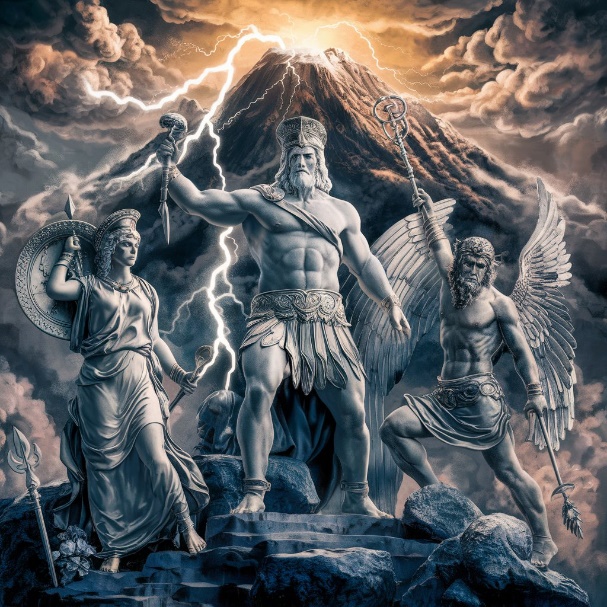
Mythology [Greek] – illustration with the help of AI
Thus, it seems that it is possible to understand the field of ancient mythologies from a psychological point of view. This interdisciplinary approach is known as psychomythology, and it involves the analysis of myths and mythological themes using psychological theories and concepts.
In an article published online the psychologist Osman Güneş Özkurt writes: [https://medium.com/@oguneso/psychomythology-the-power-of-myths-and-human-psychology-e512665dcbda]
"Psychomythology is the study of human imagination and thoughts. This discipline examines how people express themselves through myths, legends and other fictional stories and the effects of these stories on human psychology. Observations from this discipline can also reveal reflections in contemporary society.
These stories, in which man and nature are combined , reveal the social and psychological conditions of the time. Psychomythologists also study how people relate to mythological characters and the effects of these on human behavior. Psychomythology is a representation of psychological archetypes, which have been told for thousands of years , we can also study ancient symbols, music, and food in a psychodynamic way.
Psychology and mythology may seem like separate subjects, but this is a completely wrong thought. Myths, epics and legends are reflections of human thoughts and consciousness. These stories from the past can create personal or collective archetypes. This is similar to the perspective of today's TV series. For example, to get to know a country, you can look at the TV series and movies produced by that country. Because it is possible and this will provide a collective archetype of that country. Just like country films and series, the content created by mythological stories reflects the psychodynamic status of the individual and society. By the way….many of the names used in psychology come from mythology.
Some examples of this are Adonis complex, androgynous, Andromeda complex, catharsis and more.
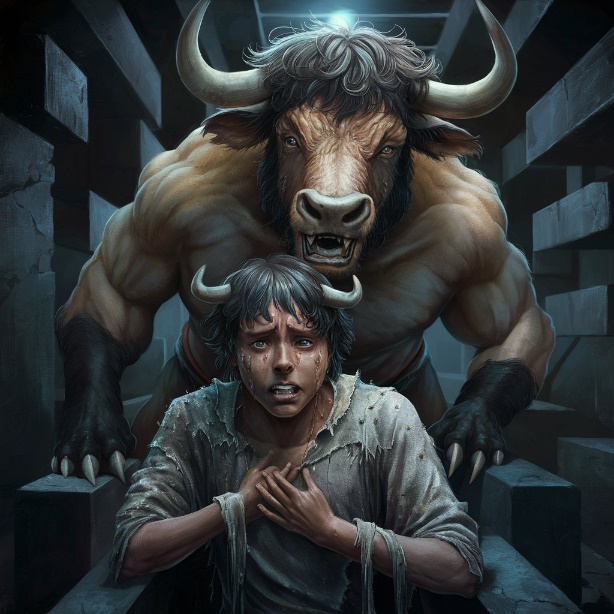
Mythology – illustration with the help of AI
…by the way historically the question is also asked whether myths are exaggerated stories about ancient events which later applications can create functional structures for society …or whether elements in myths are records of real events from prehistory and they can provide us with knowledge about early history and allow us to draw conclusions, therefore they are informative texts in terms of history. However, they can of course also mislead. For example, the Trojan War.

An attempt to understand mythology and its riddles – illustration with the help of AI
Many well-known psychologists and psychiatrists have conducted research on the similarities between mythology and psychology. Not only psychologists have done research in this field, but also anthropologists, writers and others in various fields have written their thoughts on this topic. The best known of them are Sigmund Freud, Carl Gustav Jung, Alfred Adler and many other scientists.
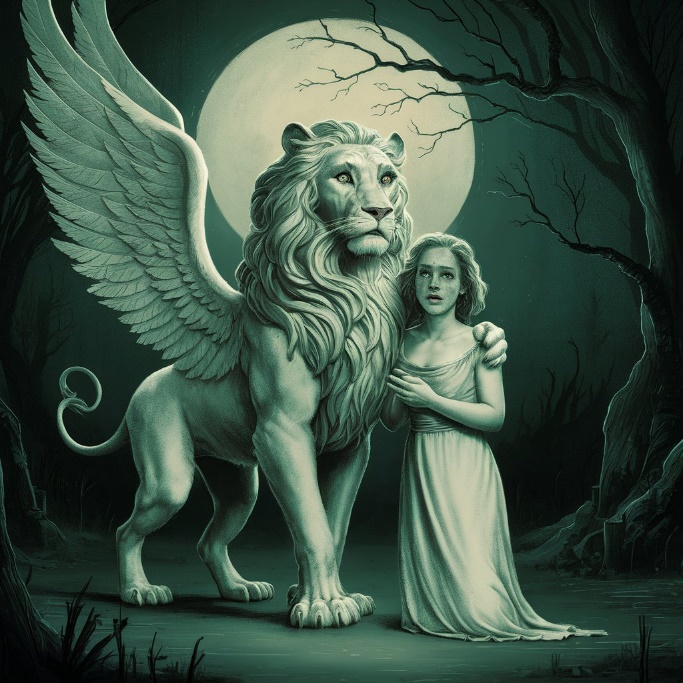
An attempt to understand mythology – an illustration with the help of AI
Sigmund Freud believed that the symbols and objects we see in our dreams are important to the human psyche and are symbolized in the subconscious. He combined dreams and mythology by noting the similarity between them, as both take place in a timeless world. Mythology tries to systematically organize the world of phenomena as the dream organizes its contents.
Carl Gustav Jung, on the other hand, believed that mythology is an expression of the collective unconscious. According to Jung, we are connected to the collective unconscious of humanity and rely on its symbols and entities…. He discovered that there are many similarities between the content of his patients' dreams and the mythological and religious themes found in many cultures. He referred to these common symbols as "archetypes", which he believed appeared in dreams and mythology….
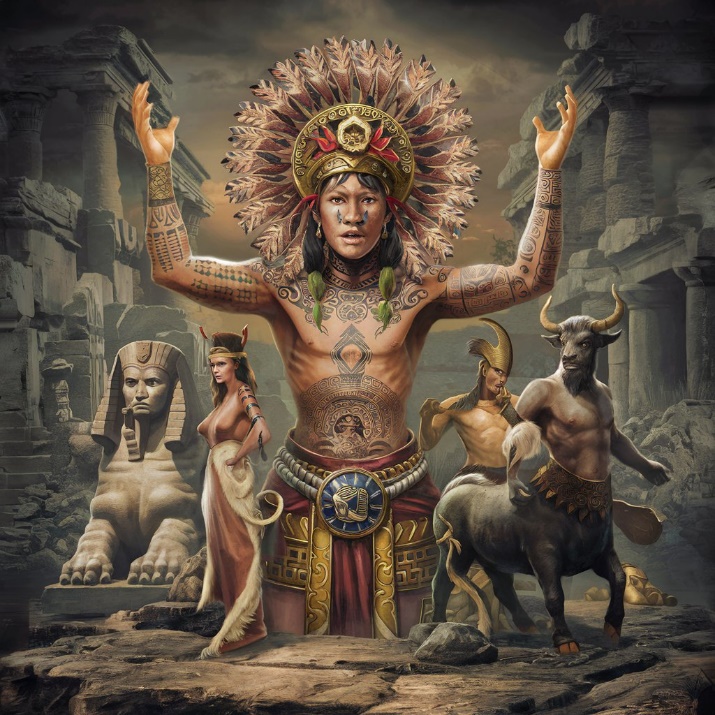
An attempt to understand mythology – an illustration with the help of AI
Claude Levi-Strauss is an anthropologist, ethnologist, and one of the most important figures in structuralist anthropology. He believed that myths are a form of communication between societies. For him, the structure is important in mythology. He breaks down mythology and legends into their component parts [to reveal the structure behind them]….
Vladimir Yakovlevitch Propp is a Soviet folklorist and scholar who analyzed the basic structural elements of Russian folktales in order to define the most basic and indivisible structural units. He analyzed the legends and mythology of Russian literature in thematic fragments. The repeating legend structures have elements arranged in a linear fashion. This structural approach is useful for analysis."
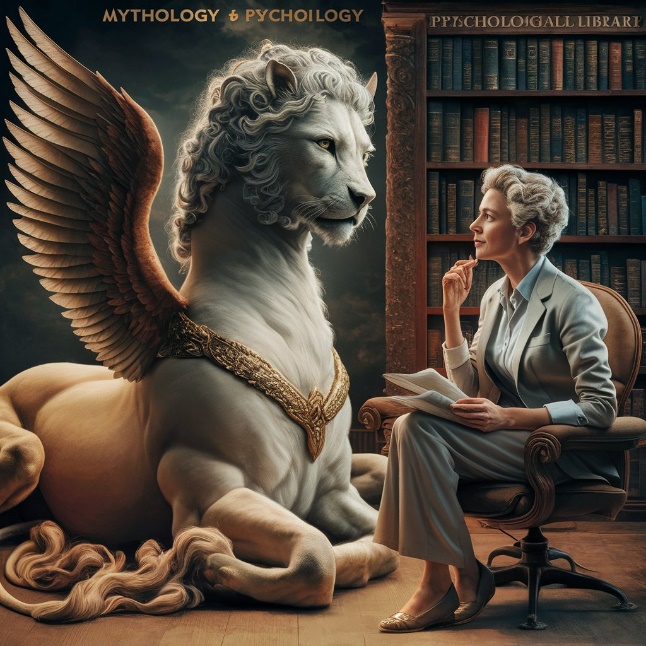
An attempt to understand mythology and its riddles – illustration with the help of AI
By the way, one of us [A.S.] raised the claim that a religion that has lost its power will be defined in the future as a mythology of the past, whereas a mythology of the past was once an active religion with believers. is that so?
Indeed, the comparison between mythology and religion is no less interesting than the one between mythology and psychology.
As a rule, religion and mythology are concepts close to each other, but there are clear differences and similarities between them.
What are the differences between them?
Nature and purpose:
Religion: usually includes a structured system of beliefs and practices centered on the worship of a deity or deities, the practice of rituals, and the instruction of moral behavior.
Religions often include doctrines, ethical guidelines, and sacred texts.
Mythology: consists of a collection of myths, which are traditional stories that usually explain natural phenomena, the origins of the world, and the customs and values of a culture. Myths are more narrative in nature and do not necessarily prescribe specific rituals or moral codes.
Function:
Religion: provides a framework for understanding the world, offers a spiritual path, moral guidance and a sense of community. It is often about organized worship and institutions.
Mythology: mainly used to explain the mysteries of life, the universe and human existence through stories. It conveys cultural values, archetypes and human experiences, but does not require organized practice or worship.
Structure:
Religion: usually has a formal organizational structure, including clergy, places of worship, and specific rituals.
Mythology: usually lacks a formal structure and is more fluid, consisting of various stories passed down from generation to generation.
Sacred texts:
Religion: Sacred texts are often considered authoritative and divinely inspired (eg, the Bible, the Koran, the Vedas).
Mythology: Stories are usually part of an oral tradition and written down later, but are not usually considered divinely inspired or authoritative in the religious sense (eg , Greek myths, Norse sagas).
Religion: requires belief in certain doctrines and active participation in rituals and moral behaviors.
Mythology: involves believing in stories more as cultural or symbolic truths rather than literal truths, with no practices required.
The similarities between religion and mythology:
Narrative elements: Both religion and mythology use stories to convey deeper truths about existence, human nature, and the cosmos.
Explanation of the unknown:
Both are used to explain the unknown, whether it is the origin of the world, natural phenomena, or human behavior.
Both play crucial roles in shaping cultural identity and values. They provide shared narratives that help unite communities.
Moral and Ethical Lessons:
Both often convey moral and ethical lessons, though religion does so more generally, while mythology does so more concretely.
Symbolism and Allegory:
Both use symbolism and allegory to express complex ideas and concepts. Deities, heroes, and mythological creatures often represent broader human qualities and cosmic principles.
Many religions incorporate mythology into their structure. For example, ancient Greek religion was intertwined with Greek mythology, where stories about gods like Zeus and Athena were part of both religious practice and mythic narrative.
Myths can develop into religious beliefs. For example, early stories about deities can become the foundations of religious worship and doctrine, and as mentioned in some modern religions there are mythological elements that are revered in the same way as ancient myths, such as the parables in Christianity, that serve both narrative and moral functions.
Examples:
Greek Mythology and Religion: Stories of gods like Zeus, Hera and Apollo are both religious and mythological. The myths explained natural phenomena and human nature, while the religious practices included the worship of these gods.
Hinduism: combines rich mythology (stories about gods like Vishnu, Shiva and Lakshmi) with religious practice and doctrine, illustrating how the two can co-exist and complement each other.
Christianity: contains elements of mythology (creation stories, miracles and saints) within its religious framework, combining narrative with doctrine and worship.
Understanding these distinctions and connections helps to appreciate how human cultures use both religion and mythology to navigate and understand the world.
Below we will discuss the ways in which psychology can be applied to the study of ancient mythologies:
Jungian analysis: Carl Jung's theories of archetypes and the collective unconscious are relevant to the psychological interpretation of myths. As mentioned, Jung believed that myths reflect symbols and universal themes (archetypes) that reside in the collective unconscious of humanity. Examples of archetypes include the hero, anima / animus, persona, shadow, and else.
Freudian interpretation: Sigmund Freud saw myths as manifestations of the unconscious, reflecting repressed desires and internal conflicts. For example, Freud interpreted the Oedipus myth as symbolic of the child's unconscious desire to compete with the same-sex parent for the opposite-sex parent's affection.
Myth as a reflection of psychological processes: Myths can be considered symbolic narratives that represent basic psychological processes and life stages. They often deal with themes such as creation, transformation, identity, death and rebirth, which are central to the human experience.
Therapeutic Uses of Myth:
Myths can be used in psychotherapy to help people understand and navigate their personal struggles. Mythological stories can provide a framework for exploring personal narratives, facilitate insight and promote healing.
Myth and Identity:
The study of myths can reveal how different cultures understand the self and the human condition. Myths often embody collective values, beliefs and existential questions, and offer insight into the psychological makeup of a society.
Comparative Mythology: By comparing myths from different cultures, psychologists can identify common patterns and themes, and suggest basic psychological similarities between diverse human populations.
Symbolism and Metaphor: Myths are rich in symbols and metaphors, which can be analyzed to reveal deeper psychological meanings. For example, the journey of a hero in a myth can symbolize the individual's personal journey towards self-discovery and fulfillment.
Thus understanding ancient mythologies through a psychological lens provides a deeper appreciation of these stories and their continuing relevance. It emphasizes the ways in which myths resonate in the human soul, reflect and shape our understanding of ourselves and the world.
The question arises, what are the psychological motives and passion behind the various heroes and characters in ancient mythologies?
We answer that the psychological motivations and passions behind various heroes and characters in ancient mythologies are deeply intertwined in human nature, and reflect universal experiences, passions, fears and conflicts.
Here are some key psychological themes and common motivations in heroes and mythological figures:
Search for identity and self-discovery
Examples: Odysseus (Greek mythology), King Arthur (Arthurian legend).
Psychological motivation: a journey of self-discovery and personal growth. Heroes often go on journeys to discover their true selves, confront their strengths and weaknesses, and understand their place in the world.
Struggle against adversity
Examples: Hercules (Greek mythology), Gilgamesh (Mesopotamian mythology).
Psychological motive: overcoming obstacles and proving the hero's worth. Heroes face tests and challenges that test their physical, mental and moral strength, symbolizing the human struggle against adversity and the pursuit of excellence.
Redemption and atonement
Examples: Orestes (Greek mythology), Anakin Skywalker/Darth Vader (modern Star Wars mythological narrative).
Psychological motive: asking for forgiveness and redemption for past wrongs. Characters may take on dangerous missions or endure great suffering to atone for their sins and find redemption.
Pursuit of justice
Examples: Theseus (Greek mythology).
Psychological motive: the desire to right wrongs and to maintain order. Heroes often fight against tyranny, injustice, and chaos, embodying the human quest for justice and social harmony.
Examples: Achilles (Greek mythology), Lucifer (Christian mythology).
Psychological motivation: exploring the power, pride, and consequences of hubris [excessive pride]. Heroes and characters often face the limitations of their power and the dangers inherent in excessive pride, which reflects the psychological struggle with ego and ambition.
Sacrifice for the common good
Examples: Prometheus (Greek mythology), Jesus (Christian mythology).
Psychological motive: altruism and the willingness to sacrifice yourself for others. These characters exemplify the ideal of self-sacrifice and belief in a cause greater than yourself, emphasizing the human capacity for empathy and selflessness.
Seeking immortality
Examples: Gilgamesh (Mesopotamian mythology), Tithonus (Greek mythology).
Psychological motive: the fear of death and the desire for eternal life. The characters often go on quests to achieve eternal life, reflecting the human anxiety about death and the longing for eternal meaning.
Conflict with the dark self [the shadow according to Jung]
Examples: Dr. Jekyll and Mr. Hyde (modern mythological narrative), Batman vs Joker (modern mythological narrative).
Psychological motive: dealing with the darker sides of the psyche. Heroes often face their dark selves or their dark counterparts, symbolizing the internal struggle between good and evil within the human mind.
Transformation and rebirth
Examples: Persephone (Greek mythology), Phoenix (various mythologies).
Psychological motive: the cycle of death and rebirth, change and renewal. The characters undergo significant transformations, symbolizing the human capacity for change and the hope for renewal.
Romantic and family love
Examples: Orpheus and Eurydice (Greek mythology), Rama and Sita (Hindu mythology).
Psychological motive: the power of love and family ties. Characters are often driven by deep love for their partners or family members, emphasizing the importance of relationships and emotional connections.
By analyzing these motivations, we gain insights into the human condition, and an understanding of how ancient myths resonate with contemporary psychological experiences and issues.
Here are five detailed examples of ancient mythological heroes and figures, along with the motivations and psychological passions that drive them:
Odysseus (Greek mythology)
Psychological motivation: search for identity and self-discovery
Example: In Homer's Odyssey, Odysseus embarks on a long journey home after the Trojan War. His adventures, including encounters with the Cyclops and the Sirens, are not only physical challenges but also opportunities for personal growth and self-discovery. During his journey Odysseus learns about his strengths, weaknesses and the importance of cunning and intelligence over strength of arm.
Psychological motive: struggle with adversity
Example: Hercules is tasked with completing the twelve labors, a series of seemingly impossible tasks. These works, such as the killing of the lion of Menamah and the capture of the wild bull on the island of Crete, symbolize the human struggle to overcome overwhelming risks and personal challenges. Hercules' journey is a testament to resilience, perseverance and the human ability to bear hardships.
Prometheus (Greek mythology)
Psychological motive: sacrifice for the common good
Example: Prometheus defies the gods by stealing fire from Olympus and giving it to mankind, a symbol of the gift of knowledge and enlightenment. As punishment, he is tied to a rock where an eagle eats his liver every day. Prometheus' sacrifice emphasizes the theme of selflessness and the human drive to help others, even at a heavy personal cost.
Gilgamesh (Mesopotamian mythology)
Psychological motive: search for eternal life
Example: In the Epic of Gilgamesh, the hero king Gilgamesh embarks on a quest for immortality following the death of his friend Enkidu. His journey reflects the human fear of death and the desire to find meaning and eternal life. Ultimately, Gilgamesh learns that eternal life can be achieved through a lasting legacy and memories of one's deeds.
Psychological motive: redemption and atonement
Example: Orestes, son of Agamemnon and Clytemnestra, seeks to avenge his father's murder by killing his mother. This act opens a cycle of guilt and retribution, prompting Orestes to seek purification and forgiveness. His story, especially as depicted in Aeschylus' Oresteia, explores themes of family duty, justice, and the psychological torment of guilt and the search for redemption.
And here are three more examples of heroes and characters from other ancient mythologies, along with the motivations and psychological passions that drive them:
Rama (Hindu mythology)
Psychological motive: duty and respect
Example: In the epic Ramayana, Rama is the embodiment of dharma (duty and justice). When he is unjustly exiled from his kingdom, he obediently accepts his fate and lives in the forest for fourteen years. During his exile, he faces many challenges, including the abduction of his wife Sita by the demon king Ravana. Rama's journey to save Sita and restore dignity reflects the psychological themes of duty, loyalty and adherence to moral principles despite personal suffering.
These examples illustrate how ancient myths use rich narrative frameworks to explore complex psychological themes, making them transtemporal reflections of nature and human experience.
Siegfried (Norse/German mythology)
Psychological motive: heroic ideal and tragic flaw
Example: In the Nibelungenlied, an ancient Germanic epic, Siegfried is a dragon slayer and a hero who embodies the warrior ideal. He is brave, strong and moral, but his tragic flaw is his innocence and overconfidence. Siegfried's quest for the glory and treasures of the Nibelungen leads to his downfall when he is betrayed and killed. His story reflects the psychological exploration of the hero's journey, the pursuit of honor and the consequences of hubris and betrayal.
Isis (Egyptian mythology)
Psychological motive: devotion and maternal love
Example: Isis, the goddess of medicine, magic and nature, is a powerful Egyptian goddess known for her devotion to her husband Osiris and her son Horus. When Osiris is murdered and his body dismembered by his brother Set, Isis tirelessly seeks to retrieve and reassemble his body. Her actions symbolize the themes of devotion, resurrection and the protective power of love. The story of Isis highlights the psychological depth of loyalty, grief and the enduring power of love and nurturing.
These examples from Hindu, Norse/Germanic, and Egyptian mythologies illustrate how diverse cultures use mythological narratives to delve into basic psychological themes and human experiences.
Recall now that we assume that the social self consists of internalizations of people who have had a substantial influence on the individual, and that these internalized figures are arranged in a hierarchical order with the most influential internalized figure called the inner leader [the collection of internalized figures in the social self is metaphorically referred to by us as the "board of internalized figures", see previous conversations].
We also assume that certain ancient writers who composed and created ancient mythological stories constructed them based on the interaction of internalized human characters in their social selves [with each of these internalized human characters having their own attitudes, feelings, and behavior]. Now we will ask how this background can be used to understand the creation of ancient mythologies and their essence and heroes?
Understanding ancient mythologies through the lens of the internalized social self seems to involve analyzing the inner psychological landscapes of the authors and storytellers and how these influenced the creation and essence of their myths. This approach holds that it is possible and the characters and narratives in mythologies are a reflection of the internalized characters of the authors and the dynamics between them. This is how this background can be used to understand the creation, essence and heroes of ancient mythologies:
Identifying internalized characters
Action: The characters in ancient myths can be analyzed to identify potential internalized figures in the authors' lives, such as influential family members, mentors, rivals, or social archetypes.
Example: In Greek mythology, Zeus may represent an internalized father figure, embodying authority, power, and leadership, perhaps reflecting the author's own relationship with paternal authority.
Understanding the hierarchical order
Action: The hierarchical order of these internalized figures can be determined by examining the prominence and influence of various figures in the myths.
Example: In the Iliad, Achilles can be seen as an inner leader, the highest in the hierarchy and reflecting the importance of personal honor and heroic ideals in the author's board of characters. Other figures such as Hector or Agamemnon may represent other influential inner figures with different hierarchical positions.
Investigating interactions and conflicts
Action: Explore the interactions and conflicts between mythological figures as symbolic representations of the internal conflicts and relationships within the author's social self.
Example: The conflict between Zeus and Prometheus in Greek mythology can symbolize an internal struggle between an internalized authority figure in the author's board of characters and a rebellious and innovative internalized figure.
Attitudes, feelings and behaviors
Action: Analyze the different attitudes, feelings and behaviors of each character in a mythological story in order to understand the different aspects of the author's internalized characters.
Example: In the Mahabharata, the complex personalities and moral dilemmas faced by characters such as Arjuna and Krishna may reflect the moral conflicts between characters in the author's social self.
Projection of personal and cultural values
Action: Consider how the projection of these internalized characters in mythological narratives represents both personal psychological landscapes and broader cultural values.
Example: The story of Osiris, Isis and Horus in Egyptian mythology can be seen as a projection of the author's internalized family figures, emphasizing themes of loyalty, resurrection and the continuity of life, which were central to Egyptian culture.
Understanding archetypes rather than the collective unconscious
Action: referring to characters internalized in the author's social self as representing Jungian archetypes
Example: An internalized figure in the social self of the author of the story represented as the archetype of the hero, as seen in characters such as Hercules or Gilgamesh, reflects universal patterns of the journey of self-discovery, struggle and victory that resonate in the collective unconscious.
Context of historical and social influences
Action: It is possible to link the internalized characters and their interrelationships in the historical and social context of the author's time in order to understand the external influences on the internalized characters in the social self.
By applying this framework, perhaps researchers can gain deeper insights into the psychological motivations behind the creation of ancient mythologies and understand the essence and heroes of these myths as a reflection of the internalized social self of their creators.
This approach bridges the gap between personal psychology and cultural expression, revealing how individual experiences and social influences shape mythological narratives.
Here are two examples from different ancient mythologies, illustrating how the internalized social self of the authors influenced the creation, essence and heroes of these myths:
A] Greek mythology: Zeus and Prometheus
Internalized figures: an authoritative father figure (Zeus) and a rebellious innovator (Prometheus).
Example: The myth of Prometheus stealing fire from Zeus can be seen as a reflection of an internal struggle and conflict in the author's character board between a character who embodies authority and a character who embodies a desire for independence and innovation.
B] Hindu Mythology: Rama and Ravana
Internalized characters: the ideal king and moral paragon (Rama) and the embodiment of ego and desire (Ravana).
Example: In the Ramayana, Rama's struggle with Ravana can be interpreted as an internal struggle between an internalized character in the author's board of characters who embodies justice and a moral life versus an internalized character gifted with intense passions. This reflects the internalized dharma (duty) values of the author and the consequences of deviating from it.
By applying this framework, it is possible to gain deeper insights into the psychological motivations behind the creation of ancient myths, understanding them as a projection of the authors' internalized characters and the dynamic interrelationships within their social selves.
We will now note that in the model we propose the social self consists of "secondary selves" which include the following types:
1] The variety of representations of the "Me" that originate from attitudes and feelings towards the self and its representations in different periods of life.
2] Representations of internalized figures that originate from the significant figures that the person was exposed to during his life, but as mentioned there may also be imaginary figures that greatly influenced the person and here we note that figures from the myths can be internalized among the person's board of figures and even be in high positions in the hierarchy, and especially in periods when the myths are used as a platform accompanying and supporting religious belief.
3] internalized representations of "subculture" [subculture refers to social influences in the environment in which a person lives and are not necessarily related to a specific person]. Here a subculture that includes a variety of myths to which symbolic importance is attributed will be represented in the board of characters and will include elements and meanings derived from the mythology relevant to that subculture.

Illustration with the help of AI: The Board of Internalized Characters.The large figure expresses the internalized leader self.
As mentioned, we call the social self metaphorically the "board of figures" or more precisely the "directorate of internalized figures". We note that this internalized board usually has a hierarchy in which there are more influential and dominant figures that we metaphorically called "the internal leader(s)" and these figures set the tone and even censor and determine which contents, positions and behaviors cannot be included in the board of internalized figures.
As mentioned, we will point out again that the person as a whole is not usually aware of the influence of the internalized character board and recognizes its influence as arising from his own desires and attitudes. We will also note that, as a general rule, the board is very dynamic and there are constant struggles and power relations between the internalized characters that make it up regarding the positions they will express, with the internal leader or leaders usually dictating the tone. This is how it is possible to internalize various external characters that influence the person in the "directorate of internalized characters", but we will emphasize again that usually the most important internalization is that of what we called the "leader self". Here it is about internalizing a character that has a great influence and shapes the person for good and/or bad, that has a great influence on the panel of internal characters that build the social self.
We will also note that the therapist whose character is often internalized in the patient's directory of characters [especially in long treatments and in treatments in which a special and empathetic relationship is established with the therapist] can emphasize motifs, messages and insights through the stories of mythology.
Finally, the therapist can also encourage and even inculcate the creation of a character [for example with mental strength and coping ability] from the mythology that will be internalized in the patient's directorate of characters that will rise in the hierarchy and have a positive effect on him in the direction of the therapeutic goals.
That's it for now,
yours,
Dr. Igor Salganik and Prof. Joseph Levine
 Prof. Joseph Levine, M.D. is an emeritus associate professor in the Division of Psychiatry, Faculty of Health Sciences, Ben Gurion University in Israel. Prof. Levine is a certified psychiatrist with clinical experience in controlled trials of adult psychiatric disorders and in psychotherapy. He was awarded a NRSAD independent investigator grant for the study of Creatine Monohydrate in psychiatric disorders -- mainly Schizophrenia. He resides and treats patients in Tel Aviv and all of central Israel.
Prof. Joseph Levine, M.D. is an emeritus associate professor in the Division of Psychiatry, Faculty of Health Sciences, Ben Gurion University in Israel. Prof. Levine is a certified psychiatrist with clinical experience in controlled trials of adult psychiatric disorders and in psychotherapy. He was awarded a NRSAD independent investigator grant for the study of Creatine Monohydrate in psychiatric disorders -- mainly Schizophrenia. He resides and treats patients in Tel Aviv and all of central Israel.
Leave a comment